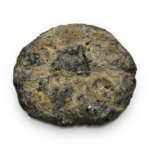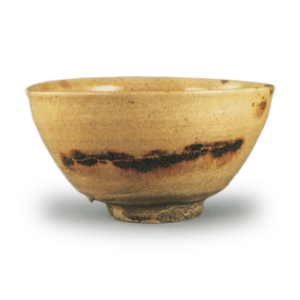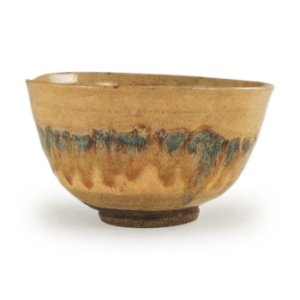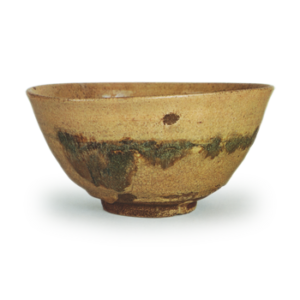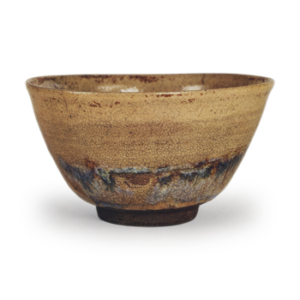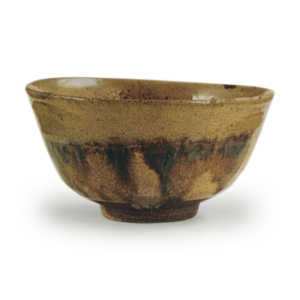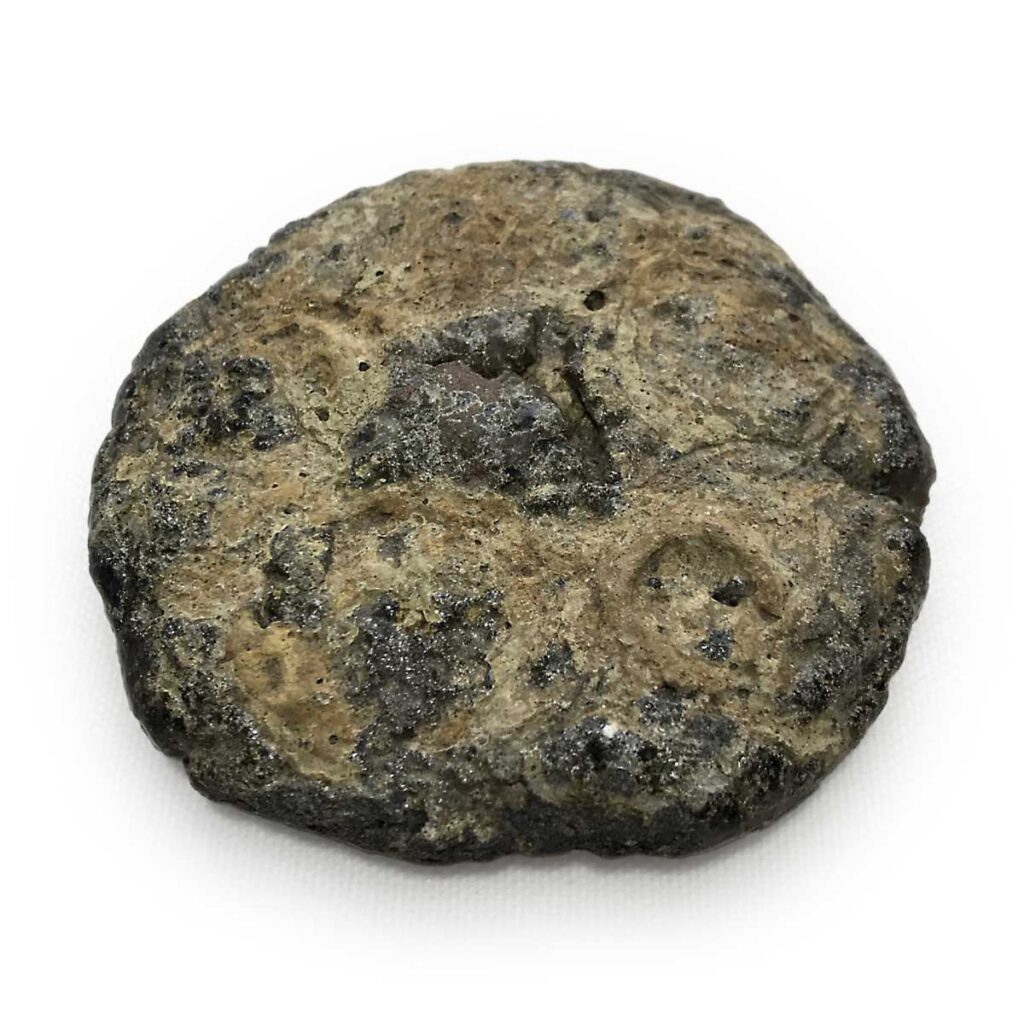
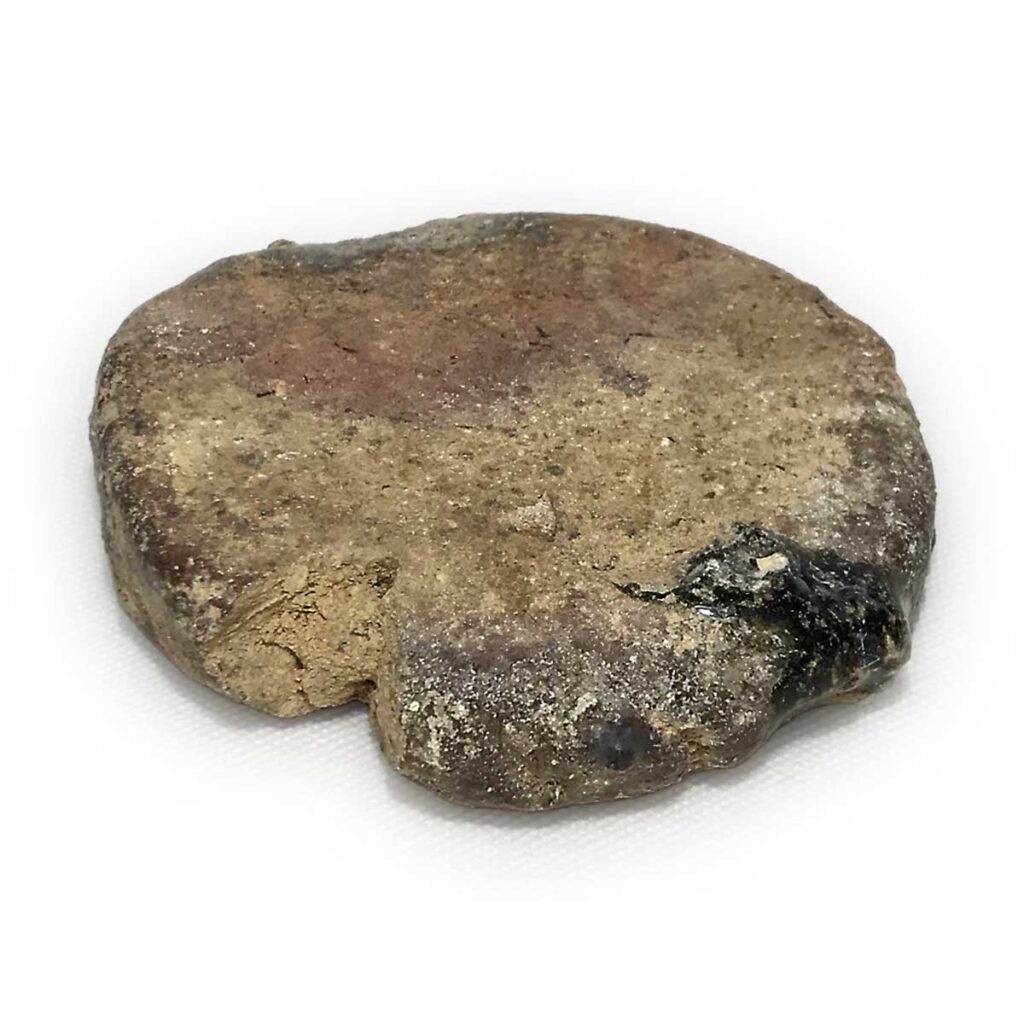
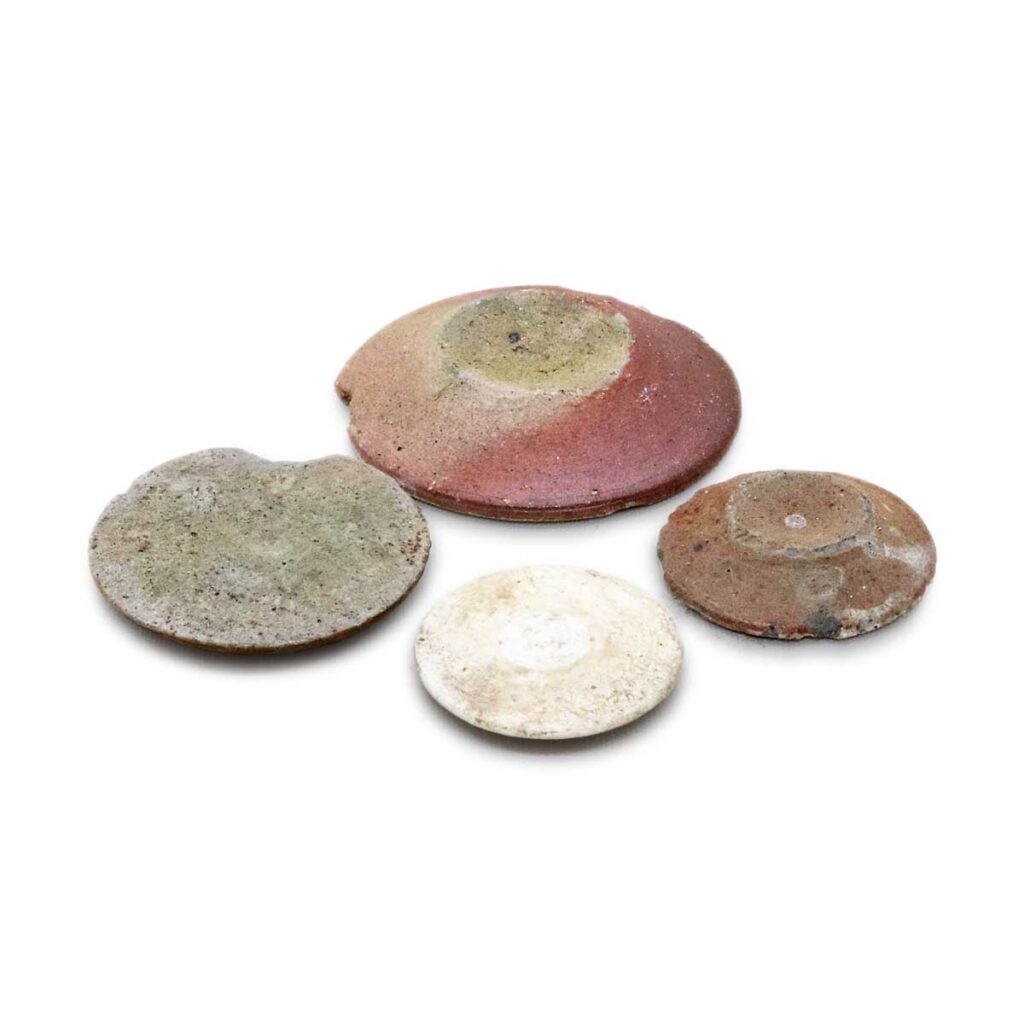
A firing stand used for firing ceramics.
Available in various shapes and sizes, including square and round.
Made of refractory clay.
The character “hama” is sometimes used, and in Kyoto, the names “oshi-hama” and “hiki-hama” are used in the air.
Both are used to place ceramics on the inner bottom of earthenware bowls, but oshihaema is usually used, and hiki-haema is used when firing refined ceramics.
Oshiwa-ma is made by mixing equal amounts of white clay from the Higashiyama area around the Great Buddha with small sand and saltpeter clay from Hikone, Shiga Prefecture, or by applying fine Hioka or Shigaraki stones on top of molding with Daibutsu clay and pressing to a thickness of 6-9 mm, the size of which is made according to the size of the vessel, and placing ceramics on it for firing.
The hibaha-ma is also called “dochin” and is made of the same clay as the former, and is shaped in the same way as the latter, so that it does not seem to slant or slant.
The oshiwama is slightly thicker and has a hole in the center through which the fire is let out.
The sharp edges are called “eyes” to prevent marks from being left on the porcelain.
In some cases, the potter’s wheel is placed directly on the hina without attaching the eye.
In Seto, hama is called tochi.
(Ceramic Instructions, Japanese Ceramics, Kyoto Ceramic Art, History of Japanese Ceramics in the Early Modern Period)

